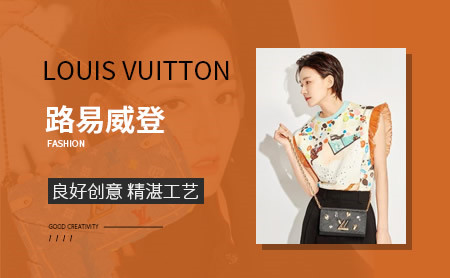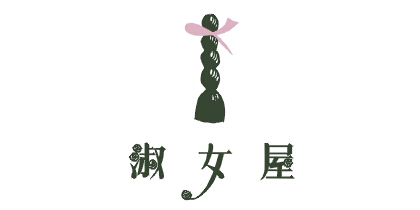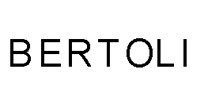LV路易威登品牌怎么样 申请店铺
外推网助力LV路易威登品牌出海!将品牌入驻外推网,定制LV路易威登品牌推广信息,可以显著提高LV路易威登产品曝光,简直是跨境电商爆单神器!目前仅需1000元/年哦~

路易威登
自1854年以来,代代相传至今的路易威登,以卓越品质、杰出创意和精湛工艺成为时尚旅行艺术的象征。产品包括手提包,旅行用品,小型皮具,配饰,鞋履,成衣,腕表,高级珠宝及个性化订制服务等。www.chinapp.com中国品牌网
法国奢侈品牌路易威登的发展历程,始于一段跨越万水千山的步行之旅。
1835年,路易威登先生(LouisVuitton)年方14岁,便告别接近瑞士边境侏罗山区Anchay村庄的老家,徒步250哩远赴巴黎闯天下。来自磨坊及木匠之家的他,在途上当上多种小工来解决三餐一宿及赚取盘缠,后来主攻木制品之手艺,但却令他制作榉木及白杨木的手艺大为精进,成为受用一生的宝贵经验。
1837年路易威登先生抵达花都,并有幸成为行李箱工匠Marechal先生的Layetie-Emballeur学徒,当时生产行李箱的工匠均被统称为Layetie-Emballeur。
1837年法国首条铁路通车,1838年一艘欧洲蒸汽轮船首度成功横越大西洋,标志现代旅游年代正式来临,当时巴黎行李箱工匠以人手制作的白杨木衣箱非常精美,他们又精于为皇室贵族收拾华丽的行装,所以首都巴黎对其产品需求随之急升。
1853年,路易威登已晋升为老板的首席助理,同时成为Eugenie皇后最信任的行李箱专家。自成为皇家御用后,来自上流社会阶层的时尚客人随即纷涌而至。
路易威登于1854年结婚,同年作出建立自己的公司的重要决定。夫妻俩在尊贵地段RueNeuveDesCapucines四号(即今天的RuedesCapucines)开设店铺,选址跟梵登广场(PlaceVendome)及后来兴建的歌剧院仅咫尺之遥。
路易威登成立公司后立即作了一个影响深远的重要决定,就是以耐用又防水的帆布物料将其中一个旅行箱覆盖。四年后(即1858年),他推出一款全新产品—方便运输的平盖白杨木行李箱。此行李箱表面覆以优质灰色防水Trianon帆布,角位以金属包边,装上手挽及托架,表面的榉木条以铆钉钉牢;内部设计同样富有心思,一列隔底匣及间隔方便摆放各式衣物及优雅衬饰。这新设计不但能保护衣物及易于携带,更标志留芳百世的路易威登行李箱及现代旅游文化正式诞生。
1859年,路易威登决定将生产线迁至还未被印象派画家发掘的市郊—Asnieres。宁静的Asnieres小镇位处塞纳河畔,地理位置非常优越:制造行李箱的白杨木材可以从附近Oise山谷由驳船运至,镇内又有铁路连接至巴黎Saint-Lazare车站。
1871年巴黎的总店亦不敷应用,遂迁至附近的rueScribe大道一号,对面就是著名的GrandHotel,当时隔邻的大剧院尚未落成。
当时公司业务如日方中,但市面却出现各式各样的仿制品,路易威登为了打击这抄袭情况,遂于1872年在灰色Trianon帆布中加入红白条纹图案。他的儿子佐治威登(GeorgesVuitton)于1880年接掌公司业务,其后于1888年推出更复杂的啡白格子新图案,并相间地印上L.Vuitton标志字样,令他人难以仿效。超过一世纪之后,这方格图案便成为另一经典—Damier系列的创作灵感。
19世纪末至20世纪初,乔治便在纽约开办了分店。许多大明星还专门到巴黎购买箱包。各种用途的箱包也纷纷问世。随着路易·威登箱包的畅销,许多赝品也充斥市场。路易·威登虽然就此提起诉讼,但并没有制止冒牌货的泛滥。
路易威登与后人对世界先进事物以及运输、科技、建筑、艺术及时装的发展兴趣极浓,对世界事物观察入微。当时装大师Charles-FredericWorth曾经向路易威登指出,阔大的撑裙快将末落,轻便的衣裙款式即将取而代之,他立即有所领悟,于1875年创制一款两面直立打开的衣柜式行李箱,一面是挂衣架,另一面是一列抽屉,让旅客穿梭各地时不需重复收拾衣服。这款“Wardrobe”行李箱至今仍是路易威登最经典的作品之一。
早于1885年,路易威登已于伦敦OxfordStreet开设了一间分店。1898年佐治威登深信美国市场的发展潜力,遂与大型百货连锁店老板JohnWanamaker签订分销协议,首先在纽约及费城销售品牌的行李箱,其后版图扩大至波士顿、芝加哥、华盛顿及洛杉矶等地。
1905年,即HenryFord推出Model汽车前两年,品牌便推出可以藏在后备轮胎中央的防水“driverbag”,必要时当作浴盆。最早期的飞行旅程绝少不了充满实验意味的“nacelletrunk”行李箱,就算降落水面时发生意外,驾驶飞船的人员亦以靠行李箱浮在水面;另一杰作的是轻盈的“aerotrunk”行李箱,就算满载衣物重量亦只有26公斤。
另外一项重要的革命性发明,则当数佐治威登掌管公司期间于1890年面世的“unpickable”多制动栓按锁,其后品牌生产的所有行李箱均安装这款按锁设计;而每位客人获分配私人锁头号码,即客人的所有行李箱可以同一锁匙开关。这系统一直沿用至今。
Monogram图案的诞生
路易威登于于多制动栓按锁面世后6年,即1896年奠定品牌殿堂地位的重要契机:当时佐治威登认为要给予品牌产品一个一致性的形象标志,遂花了几星期不断创作图案主题草图。这时期日本美学风潮在欧洲大行其道,他选出的最后定稿亦深具传统日本徽章的意味:由圆圈包围的四叶花卉、四角星、凹面菱形内包四角星,加上重叠一起的LV两字(LouisVuitton名字缩写)组成独一无二的Monogram图案组合。公司于1897年将Monogram图案帆布设计注册,1905年更将之注册为品牌。
当时公司除专注生产硬框行李箱及手提箱外,亦开始涉足前所未见的软身旅行袋领域。第一款是1901年面世的长方型“SteamerBag”,可以摺起收在行李箱内,在海上旅程中又可以挂在客舱一角当洗衣袋用。上世纪二十年代“Keepall”面世后,软身旅行袋才正式登上大雅之堂,Keepall是现代旅行袋的先驱。Keepall及SteamerBag已披上优雅的Monogram图案现身,但初期两者是以净色帆布制造,直至1959年佐治威登的儿子加士顿(Gaston-LouisVuitton)及继承人Claude-LouisVuitton研制出柔软的防水涂层技术,从此便可将Monogram帆布制作软身的旅行袋。
1912年,巴黎中心商业地带逐渐向西发展,佐治威登决定在香榭丽舍大道兴建一座新派艺术风格大楼作为品牌的旗舰店,大楼于1914年落成,外墙刻上“巴黎-路易威登,创建于1845年”。原来大楼的位置刚好在今天的香榭丽舍大道总店对面,墙上的字刻至今仍清晰可见。二次大战后,Monogram帆布产品需求日增,公司决定拓展全球独家分销网络,品牌开设新店的态度非常严紧,与保持产品完美质素的理念同出一辙。
路易威登于全球开设超过424间专门店,全部由总公司直接管理。1987年品牌与MoetHennessy合并,组成全球最大规模及最成功的奢侈品集团—LVMH。同一时期,品牌的产品领域亦不断扩充,首推1985年面世、色泽鲜艳的Epi皮具系列,其后1993年推出男装Taiga皮具系列以及在1996年再次重新推出Damier帆布系列;同年路易威登庆祝Monogram诞生100周年,特别委托七位著名时装设计师创作限量Monogram手袋,当中最别致的设计为AzzedineAlaia创作的美洲豹皮配Monogram,以及VivienneWestwood设计的《鬼马》faux-cul旅行袋。
1998年路易威登正式晋身为全面性的时装品牌,男女成衣及鞋履、配饰及珠宝部门相继成立,来自美国纽约的设计师MarcJacobs获委任为艺术总监。当时,时装界对“grunge大师”MarcJacobs入主法国殿堂品牌甚为惊讶,但经过几年磨合,两者堪称如鱼得水。MarcJacobs与纽约前卫艺术家StephenSprouse合作而成的MonogramGraffiti(涂鸦系列)、以及与日藉艺术家村上隆创作的EyeLoveMonogram、彩色MonogramMulticolore及MonogramCerises樱桃系列。
2004年路易·威登已经到了第六代传人帕特里克·威登,现有1.36万制作箱包的工匠,他们分别在14个作坊工作,除了在法国有11个作坊外,在西班牙的加泰罗西亚和美国的加利福尼亚也有生产基地。制作箱包80%的活儿都靠手工。路易·威登还在52个国家开设了314家箱包专卖店,仅在中国就开了9家。2002年,它的营业额为30亿欧元,10年间翻了整3倍。年年的赢利额都以40%-45%的速度增长。日本是路易·威登产品的销售大户,占了它总销售额的30%。2002年在东京一家分店开张那天,在门口等候的人排了1公里长。第二个销售大户是美国。
1996年,路易·威登加盟L.v.m.h集团,极大地拓展了自己的活动空间。不仅大量生产传统产品高级箱包,还涉足时装、钟表、珠宝等行业,它一家的经营活动就占了这个集团业务总量的70%。
2004年,路易威登庆祝成立150周年,分别于纽约、香港、东京及上海等地竖立巨大行李箱型帐幕作为庆祝派对场地,向品牌创办人致以崇高敬礼。品牌亦于印度、俄罗斯、中国、及南非等地开设了大型旗舰店。充满历史价值的香榭丽舍大道总店大楼经过全面翻新工程后,已于2005年10月重新开幕。
路易威登创意总监马克·雅可布2013年10月将离职,合计任职16年。LV任命NicolasGhesquière接替小马哥为新创意总监。2007年8月,前苏联总统戈尔巴乔夫曾代言路易威登皮包广告。
2旗下产品路威酩轩集团旗下有路易威登、Givenchy、Moet&Chandon,、DomPerignon和Guerlain等品牌。
路易威登产品线:皮具产品(包括手袋、旅行箱、trunk、宅喜欢、小皮具等)、配饰、鞋履、腕表、高级珠宝及成衣。
路易威登系列:Monogram、DamierEbene、DamierAzur、DamierGraphite、DamierInfini、MonogramVernis、MonogramMulticolore、MonogramEmpreinte、MonogramIdylle、Mahina、Suhali、Epi、Taiga等等。
推出2013圣诞系列,摄影组合CoppiBarbieri受邀为LV拍摄圣诞画册,该组大片灵感源于法国桌游“跳鹅棋”(类似于大富翁)
据网易、中搜等媒体报道,9月15日消息国外媒体报道,法国路易威登(LV)旗下手表品牌TAGHeuer准备推出智能手表产品。
3品牌故事编辑2004年是该品牌创立150周年,在巴黎香榭丽舍大街的专卖店里,展出了威登箱包的3000多个样品及它的创始人路易·威登的照片,使人了解到这个由小木匠到大老板的创业历程[1]。
路易·威登1821年2月12日出生在法国的一个小村庄,父亲是附近林场的伐木工人,家境贫寒。父母没钱给他买玩具,刨子和凿子伴随着他的童年,他从小就对木工活产生浓厚兴趣。14岁那年他只身一人去巴黎,步行400多公里,走了好几天。他当时的美梦就是挣钱过好日子,所以再苦再累也不怕。
他到了巴黎以后,费尽不少周折,终于在一家著名木工手工作坊找到了活儿。工作是用山毛榉和白杨树制作盛鲜奶用的木桶。当时正是第二帝国时期,盛大舞会风靡整个巴黎,外省显贵经常趋之若鹜,许多阔太太都买这种木桶装女裙和衬裙。当时人们急需找到旅行中携带衣物的便利工具———路易·威登箱包便应运而生。
1854年,路易·威登在巴黎的阿斯尼埃尔创办了自己的第一个箱包制作作坊。因缺少启动资金,妻子拿出了嫁妆和过去的积蓄。路易非常聪明,多才多艺,富于创造精神。他发明一种有提手的扁平箱子,代替过去大而笨重的木头箱子,所用材料仍然是山毛榉、白杨树、皮革、金属饰品、带扣和锁等。箱子表面则用耐磨的灰色和浅褐色布料裱糊。
他的这种箱子不仅结实耐用,又便于出行时携带,造型美观大方,色彩典雅协调,所以很快打开销路,并得到皇后欧仁妮的赏识,她发誓只从威登那里订做首饰匣子。路易·威登以来样订做而著称。埃及国王订做了保存水果的柳条箱子,俄国沙皇尼古拉二世,印度许多土邦主,西班牙国王阿尔方斯七世,都到路易·威登店里订货。路易·威登的名气越来越大,他不仅扩大了在阿斯尼埃尔的作坊,而且在斯克里波大街开办了一家专卖店。
1857年路易的儿子乔治出生。1881年,人们在芒什海峡底下开挖隧道,与英国的交往前景可观,路易于是对儿子说:“我们争做首个在英国登陆的企业。”1885年,路易·威登的第一家分店就在伦敦开张。路易辛苦了一辈子于1892年去世,儿子接过接力棒真正创造了高档箱包帝国。
4LV在中国路易威登19世纪时就以其对于旅行的热忱与探索精神而闻名,早在1907年,一队携带路易威登行李箱的探险队由巴黎出发穿越戈壁,于北京展开了与中国的历史渊源。
1931年,配备了特别订制的路易威登旅行箱,名为“东方之旅”的探险由地中海沿马可波罗旅行路线历经315天,跋涉12000里最终抵达中国海岸。
1997年,路易威登在中国举办老爷车比赛,50辆来自全球各地的经典老爷车从大连一路行进1300公里,在一周后抵达首都北京。
2010年,作为法国馆四个首席赞助商之一,路易威登参与了上海世博会法国馆的展出。2011年,作为庆祝品牌在2012年进入中国二十周年的序幕,路易威登特别在中国国家博物馆举行“路易威登-艺术时空之旅”大型展览,回顾品牌自1854年以来与艺术之间的互动与交流。2012年路易威登正式迎来进入中国20周年,并已于上海揭幕位于中国大陆的第一座路易威登之家。
1992年,路易威登进入中国,截止2013年11月,路易威登已经在中国国内33个城市拥有47家专卖店,包括北京、大连、长春、成都、广州、上海、深圳、厦门、西安、青岛、杭州、昆明、温州、沈阳、南京、天津、三亚、苏州、长沙、乌鲁木齐、武汉、太原、无锡、哈尔滨、宁波、呼和浩特、福州、南宁、郑州、重庆、石家庄及合肥。同时为了确保顾客体验路易威登的独有工艺与法式奢华,路易威登仅在专卖店为顾客提供其商品与服务。
来源中国品牌网chinapp.com转载请注明出处
Since 1854, Louis Vuitton has been passed down from generation to generation. It has become a symbol of fashion travel art with excellent quality, creativity and craftsmanship. Products include handbags, travel supplies, small leather goods, accessories, shoes, Readymade clothes, watches, high-end jewelry and personalized customized services. Www.chinapp.com the development of Louis Vuitton, a French luxury brand, began with a walk across thousands of rivers and mountains. In 1835, when Louis Vuitton was 14 years old, he left his hometown near the village of anchay in Jura mountain area, the Swiss border, and walked 250 miles to Paris to explore the world. From the mills and carpenters' home, he worked as a variety of small workers on the way to solve three meals and one night and earn money. Later, he was mainly engaged in the craftsmanship of wood products, but his craftsmanship of making beech and poplar wood was greatly improved, which became a valuable experience of his life. In 1837, Mr. Louis Vuitton arrived in Huadu and was lucky to become an apprentice of Mr. Marechal, a suitcase craftsman. At that time, the craftsmen who produced suitcases were collectively called layetie emballeur. In 1837, France's first railway was opened to traffic, and in 1838, a European steam ship successfully crossed the Atlantic Ocean for the first time, marking the official arrival of the modern tourism era. At that time, Paris luggage craftsmen hand-made boxwood suitcases were very exquisite, and they were good at packing gorgeous luggage for the royal nobles, so the demand for its products in the capital Paris increased rapidly. In 1853, Louis Vuitton became the boss's chief assistant and queen Eugenie's most trusted luggage expert. Since becoming a royal royal royal household, fashionable guests from the upper class have come in a rush. Louis Vuitton got married in 1854, the same year he made an important decision to set up his own company. The couple opened a shop at the prestigious rue neuvedes Capucines 4 (today's ruedes Capucines), just a short distance from the Place Vendome and later the opera house. Louis Vuitton immediately made an important and far-reaching decision to cover one of the suitcases with durable and waterproof canvas materials. Four years later, in 1858, he launched a brand new product, the convenient transportation of boxwood suitcase. The surface of the trunk is covered with high-quality gray waterproof Trianon canvas, the corners are wrapped with metal, and hand-held and bracket are installed. The beech strips on the surface are nailed with rivets. The interior design is also thoughtful. A row of bottom boxes and intervals are convenient for putting all kinds of clothes and elegant linings. The new design not only protects clothes and is easy to carry, but also marks the birth of Louis Vuitton luggage and modern tourism culture. In 1859, Louis Vuitton decided to move the production line to the outskirts of the city, which had not yet been explored by the Impressionists - Asnieres. The quiet town of Asnieres is located on the Seine River, and its geographical location is very superior: the poplar wood used to make suitcases can be transported by barge from the nearby oise Valley, and the town has a railway connection to Saint Lazare station in Paris. In 1871, the head office in Paris was not enough, so it moved to No. 1 ruescribe avenue nearby, opposite the famous Grand Hotel. At that time, the grand theater next door had not been completed. Louis Vuitton added red and white stripes to gray Trianon canvas in 1872 in order to combat the plagiarism. His son, Georges Vuitton, took over the business in 1880, and then in 1888 he introduced a more complex new pattern of brown and white plaid, with the L. Vuitton logo printed between them, making it hard for others to copy. More than a century later, this checkered pattern became the inspiration of Damier series, another classic. From the end of the 19th century to the beginning of the 20th century, George opened a branch in New York. Many big stars also go to Paris to buy bags. All kinds of bags have come out. With Louis Vuitton's bags selling well, many counterfeits have flooded the market. Although Louis Vuitton filed a lawsuit, he did not stop the spread of counterfeits. Louis Vuitton and his descendants are very interested in the world's advanced things and the development of transportation, science and technology, architecture, art and fashion, and they observe the world's things very little. When fashion master Charles fredericworth once pointed out to Louis Vuitton that the big supporting skirt was about to fall, and the light dress style was about to replace it, he immediately understood. In 1875, he created a wardrobe type suitcase with two sides open vertically, one side is a hanger, the other side is a row of drawers, so that passengers do not need to repeatedly pack clothes when they travel around. This "Wardrobe" luggage is still one of Louis Vuitton's most classic works. As early as 1885, Louis Vuitton opened a branch in Oxford Street, London. In 1898, George Vuitton was convinced of the development potential of the U.S. market, so he signed a distribution agreement with John Wanamaker, the owner of a large department store chain. He first sold brand luggage in New York and Philadelphia, and then expanded to Boston, Chicago, Washington and Los Angeles. In 1905, two years before Henry Ford launched the model car, the brand launched a waterproof "driverbag" that can be hidden in the middle of the spare tire and used as a bathtub if necessary. In the earliest flight, there was no "nacellelrunk" suitcase full of experimental significance. Even if there was an accident when landing on the water, the crew of the spaceship also floated on the water with the suitcase; another masterpiece was the lightweight "aerotrunk", which weighed only 26 kg even if it was full of clothes. Another important revolutionary invention is the "unpickable" multi brake bolt press lock, which was introduced in 1890 when George Vuitton was in charge of the company, and then all suitcases produced by the brand are equipped with this press lock design; and each guest is assigned a private lock number, that is, all suitcases of the guest can have the same key switch. This system has been used up to now. The birth of Monogram pattern Louis Vuitton established the position of brand hall in 1896, six years after the appearance of multi brake bolt press lock. At that time, George Vuitton thought that he wanted to give the brand products a consistent image mark, so he spent several weeks continuously creating the pattern theme sketch. During this period, the Japanese aesthetic trend prevailed in Europe. The final draft he selected also had the meaning of the traditional Japanese Emblem: four leaf flowers surrounded by circles, four corner stars, concave diamond with four corner stars, plus the overlapping LV (Louis Vuitton abbreviation) to form a unique Monogram pattern combination. The company registered the design of Monogram canvas in 1897, and registered it as a brand in 1905. At that time, in addition to focusing on the production of hard frame suitcases and suitcases, the company began to enter the field of soft body travel bags never seen before. The first is the rectangular "steamer bag" which was launched in 1901. It can be folded and folded in the trunk, and can be hung in the corner of the cabin for laundry bags during the sea journey. After the appearance of "keep all" in the 1920s, the soft body travel bag officially came into the hall of elegance. Keep all is the pioneer of modern travel bag. Keepall and steamer bag have shown themselves in elegant Monogram patterns, but they were initially made of pure color canvas until 1959, when Gaston Louis Vuitton, the son of George Vuitton, and Claude Louis Vuitton, the successor, developed a soft waterproof coating technology, from which the Monogram canvas can be made into a soft body travel bag. In 1912, the central business district of Paris gradually developed to the West. George Vuitton decided to build a new art style building on the Champs Elysees as the flagship store of the brand. The building was completed in 1914, with the outer wall engraved with "Paris Louis Vuitton, founded in 1845". The original location of the building is just opposite today's Champs Elysees Avenue store. The words on the wall are still clearly visible. After the Second World War, the demand for Monogram canvas products increased day by day. The company decided to expand the global exclusive distribution network. The attitude of brand opening new stores was very strict, which was the same as the idea of maintaining the perfect quality of products. Louis Vuitton has more than 424 stores around the world, all under the direct management of its head office. In 1987, the brand and MOET Hennessy merged to form LVMH, the world's largest and most successful luxury group. In the same period, the product field of the brand also expanded continuously, the first one was the EPI leather series which was launched in 1985 with bright colors, and then the taiga leather series for men's wear was launched in 1993 and the Damier canvas series was re launched in 1996; In the same year, Louis Vuitton celebrated the 100th anniversary of the birth of the monogram, and specially commissioned seven famous fashion designers to create limited Monogram handbags, among which the most unique design was the leopard skin created by azziedinealaia with Monogram, and the "ghost horse" Faux cul travel bag designed by Vivienne Westwood. In 1998, Louis Vuitton officially became a comprehensive fashion brand. The ready to wear, footwear, accessories and jewelry departments of men and women were successively established. Marc Jacobs, a designer from New York, USA, was appointed as art director. At that time, the fashion industry was very surprised that "master grunge" Marc Jacobs became the French palace brand, but after several years of running in, the two were like fish in water. Marc Jacobs collaborated with New York avant-garde artist Stephens prouse to create the monogram graffiti (graffiti Series), and with Japanese artist hayelove monogram, multicolored monogram and Monogram cerises cherry series. In 2004, Louis Vuitton has arrived at the sixth generation successor Patrick Vuitton. Now, there are 13600 craftsmen who make bags. They work in 14 workshops respectively. In addition to 11 workshops in France, they also have production bases in catalesia in Spain and California in the United States. 80% of the work of making bags is done by hand. Louis Vuitton also has 314 luggage stores in 52 countries, nine in China alone. In 2002, its turnover was 3 billion euros, which has tripled in 10 years. The annual profit increases at the rate of 40% - 45%. Japan is a big seller of Louis Vuitton products, accounting for 30% of its total sales. On the day of the opening of a Tokyo Branch in 2002, people waiting at the gate of the store lined up for one kilometer. The second big seller is the United States. In 1996, Louis Vuitton joined l.v.m.h group, which greatly expanded its activity space. Not only mass production of traditional high-end bags, but also involved in fashion, watches, jewelry and other industries. Its business activities account for 70% of the group's total business. In 2004, Louis Vuitton celebrated the 150th anniversary of its founding, and set up huge suitcase type tents in New York, Hong Kong, Tokyo and Shanghai as the celebration party venues to pay homage to the brand founders. The brand has also opened large flagship stores in India, Russia, China and South Africa. The historic Champs Elysees main store building was reopened in October 2005 after a comprehensive renovation project. Mark Jacobs, creative director of Louis Vuitton, will leave in October 2013 for a total of 16 years. LV appointed Nicolas ghesqui è re as the new creative director. In August 2007, former Soviet President Gorbachev used to advertise louis vuitton bags. 2. LVMH group's products include Louis Vuitton, Givenchy, Moet & Chandon, domperignon and Guerlain. Louis Vuitton product line: leather products (including handbags, suitcases, trunk, homestead, small leather goods, etc.), accessories, shoes, watches, high-end jewelry and ready to wear. Louis Vuitton series: monogram, damierebene, damierazur, damiergraphite, damierinini, monogramvernis, monogrammmulticolore, monogrammempreinte, monogrammidylle, mahina, Suhali, EPI, t
本文链接: https://brand.waitui.com/5be547f2d.html 联系电话:请联系客服添加 联系邮箱:请联系客服添加


















 浙公网安备 33011802001999号
浙公网安备 33011802001999号
